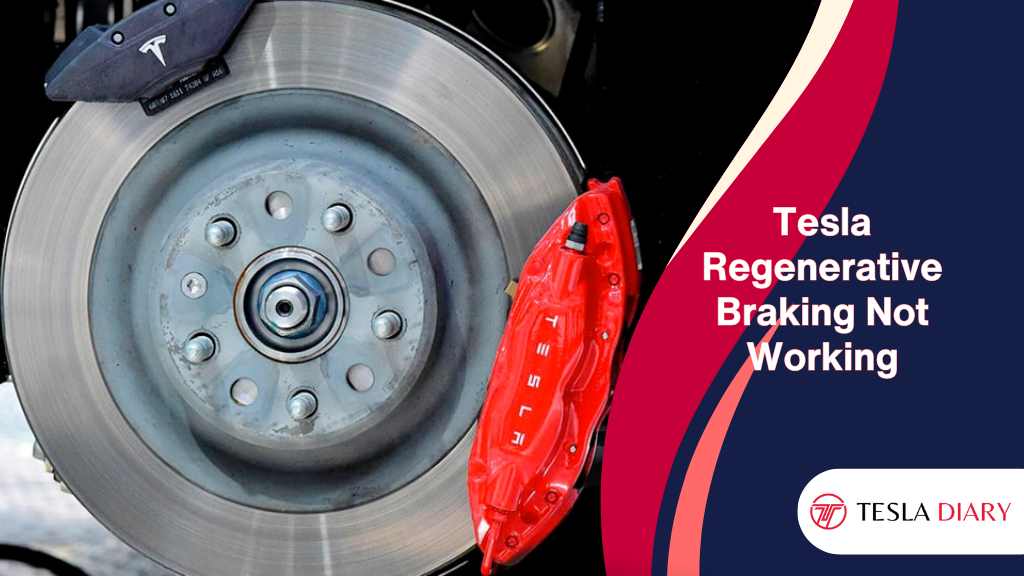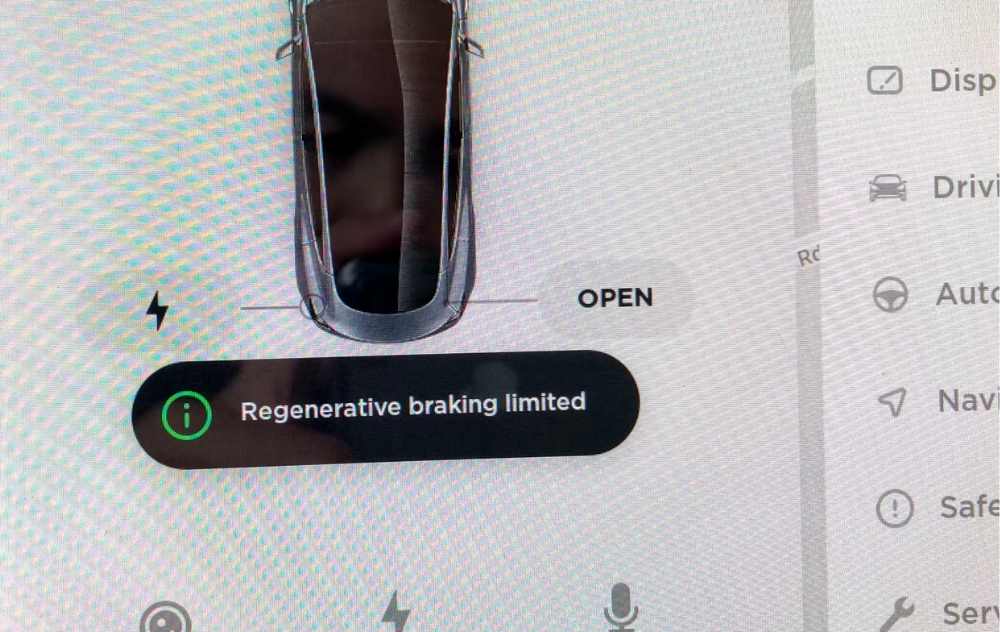Tesla’s regenerative braking system is one of the key features that sets its electric vehicles apart from the competition.
This innovative technology allows Tesla owners to recover energy while slowing down or braking, increasing efficiency and extending the vehicle’s range.
However, like any complex system, regenerative braking can sometimes encounter issues that leave Tesla owners scratching their heads.
In this article, we’ll explore common reasons why Tesla’s regenerative braking may not be working and discuss potential solutions to these problems.

In most cases, Regenerative braking temporarily reduced, or limited notifications do not necessarily mean anything wrong with the car. It may just be in an unfriendly situation to activate the regen braking. However, if the problem is persistent or you are hearing a sound when braking, there are things to check and fix.
Solving Tesla Regenerative Braking Not Working Issue
Let’s solve different issues that come up with Tesla’s state of art regenerative braking issue-
1. Cold Weather
Cold weather can significantly impact the performance of regenerative braking. In frigid temperatures, the battery may be too cold to accept a charge from regenerative braking effectively.
When this happens, you might notice that regen braking is less aggressive or even disabled altogether.
However, this should not occur in regular cold weather. From our experience, this happens when the temperature goes below freezing which is -32 °F.
Solution:
To address this issue, try parking your Tesla in a warmer environment (like a garage) when not in use.
Preconditioning the battery by plugging in your car before driving can also help warm it up and improve regenerative braking performance. To precondition the car–
- Go to Climate Controls and activate Preconditioning.
- Set the precondition time by selecting Schedule.
Enabling precondition should make the problem disappear as it will warm up the vehicle before your trip. However, if you want an instant solution, you can try defrost mode. To do this-
- Go to Climate > Defrost Car
This should solve the issue almost instantly if it is caused due to cold climate.
2. Battery State of Charge
Regenerative braking becomes less effective when the battery is near full or nearly empty.
Tesla’s regen system may reduce braking force in these conditions to avoid overcharging or over-discharging the battery.
This is the reason behind the irritating message on the Tesla screen- “Regenerative braking limited.“

Solution:
Keep an eye on your battery’s state of charge and try to maintain it between 20% and 80% for optimal regenerative braking performance.
Avoid charging to 100% or letting the battery drop to very low levels unless necessary. Tesla battery is configured to take charge up to 90% by default and I recommend maintaining the setting that way for better performance.
3. Brake Wear and Tear
Tesla vehicles use a blend of regenerative and friction braking, with the latter being used when more braking force is required.
Over time, the friction brake pads may wear down, affecting regen braking performance.
Solution:
Regularly check your brake pads for wear and replace them as needed.
If you hear a squealing sound when you brake, that means your car brakes have reached their service life limit and need immediate replacement.
4. Software Updates
Tesla frequently releases software updates that can affect the regenerative braking behavior.
An update may introduce changes to the regen system’s algorithms, potentially altering its responsiveness.
Solution:
Ensure that your Tesla is running the latest software version. Tesla owners often receive over-the-air (OTA) updates that can improve regen performance and address other issues.
To check if an update is available-
- Go to Controls > Software
- Check if there is any update available. If available, update and check if the problem persists or not.
5. Sensor and Hardware Problems
In some cases, sensor or hardware malfunctions can lead to regenerative braking problems.
Faulty sensors or issues with the electric motor could hinder the system’s ability to recover energy effectively.
Solution: If you suspect a hardware or sensor issue, it’s best to contact Tesla’s customer support or visit a Tesla service center for a thorough inspection and potential repairs.
Conclusion
Tesla’s regenerative braking system is a remarkable feature that enhances energy efficiency and driving comfort.
While it’s generally reliable, occasional issues can arise due to various factors, including weather, battery state, brake wear, software updates, and hardware problems.
By understanding these potential culprits and following the suggested solutions, Tesla owners can ensure that their regenerative braking system works as intended, contributing to a more efficient and sustainable driving experience.
Remember that when in doubt, consulting Tesla’s customer support or service professionals is always a viable option to address any persistent regen braking issues.

